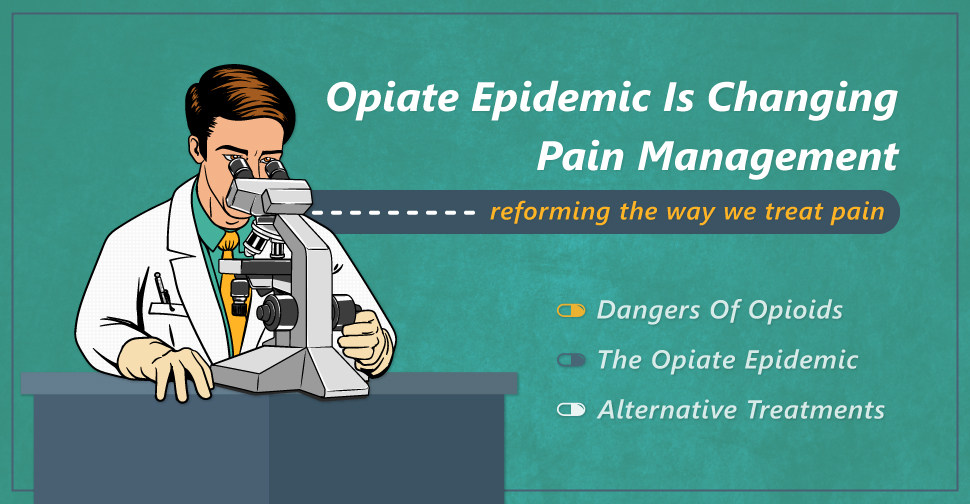
Many patients are prescribed opioids for chronic and short-term pain management. Opioids are widely known for causing dependence when used beyond the recommended dosage. In some cases, opiate medications lead to addiction to illicit opiate drugs. The rise in opioid use has led the CDC to label this as an epidemic. President Obama has identified the problem and has allotted $1.1 billion in the 2017 budget to work toward education, regulation, and enforcement of opioid drugs.
Prescribed Opioid Statistics
An epidemic occurs when a condition spreads too quickly. The opiate epidemic is a result of excessive use of the drug due to the high likelihood of addiction. Over the past 15 years, researchers have noted a rise in opioid prescriptions, abuse, and overdose. While all cases of opioid addiction is not accounted for, analysis of intake at rehabilitation centers, emergency rooms, and cohort survey studies reveal staggering results. Recent studies have concluded:
- An estimated 259 million people were prescribed opioids for pain relief in 2012
- In 2014, 60 percent of overdose deaths involved both prescription and non-prescription opioids
- Opioid prescriptions have quadrupled since 1999, and increased at an average of 37 percent each year between 2010 and 2013
- According to national statistics, 4 of 5 people addicted to heroin became addicted to opiates through prescription drugs
- In 2014, surveys suggest that 94 percent of people addicted to heroin claimed to use heroin as an “easier” alternative to prescription opiates
- Opioid deaths have quadrupled over the past 15 years due to the rise in prescription opioids
- In 2014, prescription painkillers claimed the lives of almost 19,000 people due to overdose
The rise of opiate use led to “pill mills,” or pain clinics intended to prescribe pain medication with little background or reason. These clinics, as well as many other physicians were closed down as a result of federal, state, and local regulation on the abuse of opioid drugs. The opiate epidemic has raised awareness in concerned administering physicians, changing the way pain is treated.
The Dangers Of Opioids
Opioid medications such as OxyContin and Vicodin are prescribed for moderate to severe pain management. The analgesic opioids attach to opioid receptors in the body, creating a barrier for pain and promoting a sense of euphoria. Opioids are widely used for the perceived efficiency of the drug, but carry many risks to the patient. Drowsiness, confusion, nausea, constipation, and respiratory complications are common side effects of opioid prescription use.
In addition:
- Opioid-induced hyperalgesia can occur as a result of increased dosage, resulting in hypersensitivity to pain
- Withdrawal symptoms occur in patients when the drug is discontinued. This can lead to insomnia, fever, chills, depression, anxiety, and agitation
- Medical intervention is often necessary to aid in the withdrawal period, as it is often an uncomfortable experience.
- In many cases, an opioid antagonist is necessary to ease the effects of detoxification
- Opioid overdose can quickly lead to respiratory arrest, coma, or death
- Neonatal abstinence syndrome (NAS) occurs when baby is exposed to opioids in-utero, and experiences withdrawal symptoms upon birth
Even with a prescription, medications can carry a high risk to the overall well-being of patients. Even with great intentions, patients can become addicted to opioids, leading to a multitude of short- and long-term problems. Recognizing this risk, physicians are making strides to protect the health and welfare of patients suffering from pain.
Alternative Treatments
With all of the controversy surrounding opioid prescriptions, physicians are less inclined to prescribe opiate medications as a part of pain management therapy. Regulating the use of opioid prescriptions is believed to significantly improve the overall quality of life in patients experiencing pain. Physicians are looking to other means of treating pain in patients. Some alternative medications used for treating pain include:
- NSAIDs and acetaminophen are anti-inflammatory medications. These drugs are non-steroidal, non-addictive, and aid in overall relief for mild to moderate pain.
- Antidepressants alleviate mental aspects of pain, such as stress, anxiety, and depression.
- Anti-seizure medications treat pain due to injury or nerve damage.
- Steroids provide overall anti-inflammatory pain relief.
While pain management has been made easier with the use of opioids, the risk outweighs the benefits in many cases. In addition to alternative medications, physicians are now more inclined to recommend physical therapies and lifestyle changes for long-term pain treatment. With physicians striving to become more cautious in administration, the opiate epidemic is expected to improve significantly.
Impact Of The Opiate Epidemic
Opiate use impacts the social, health, and economic welfare on a large scale. In terms of mortality, prescription opioids account for the largest portion of overdose deaths. From early 2001 to 2002, prescription opiate analgesics were responsible for more deaths than cocaine and heroin combined. Liberal use of opioid medications for mild and moderate pain treatments have played a large role in the epidemic of opioid abuse and dependence. While physicians are responding to this problem proactively, the epidemic has resulted in plans to intervene on a federal level. Patients should expect to see changes in the way pain is handled in the near future.
We Can Help
 Opiate abuse has rapidly grown over the past 15 years, and is reforming the way we treat pain. If you or someone you know is struggling with addiction due to opiate treatment, the knowledgeable staff at DrugRehab.org is here to help. We can offer guidance and resources to help you find the relief you need. Contact us today.
Opiate abuse has rapidly grown over the past 15 years, and is reforming the way we treat pain. If you or someone you know is struggling with addiction due to opiate treatment, the knowledgeable staff at DrugRehab.org is here to help. We can offer guidance and resources to help you find the relief you need. Contact us today.

